« August 2007 | Main | October 2007 »
September 27, 2007
Grocery Store Attraction Symposium

Sponsored by PolicyLink and Bay Area LISC
This one-day workshop/discussion brought together local government staff, community advocates, economic development practitioners, and others who are working to bring healthy food retailers to underserved, low-income, urban, or rural communities.
The event provided an overview of the many obstacles that make new store development challenging and highlighted some of the emerging best practices that have made new stores possible in previously underserved areas. The emphasis of the event was on discussion of the real world challenges that participants are facing and potential strategies to overcome them.
Presenters Included:
Scott Whitney, Real Estate Director, Fresh and Easy Markets
British retailer Tesco is opening a new chain of grocery stores in America with a small format well suited to urban neighborhood sites. Among their initial California locations are several in lower income communities.
Yael Lehmann, Executive Director, The Food Trust
TFT has led a concerted effort to bring grocery stores back to underserved communities throughout Pennsylvania. TFT has led high profile research into the need for stores which helped to convince the state to invest $20 million into a fund to finance new store development and support for existing independent grocers.
Ertharin Cousin, LaVelle Cousin Issues Management
Ms. Cousin is a former senior vice president of public affairs at Albertson’s who now consults with national retailers on a variety of issues including bringing food stores to lower-income communities.
Francis Spencer, Assistant Commissioner, Retail Chicago
Retail Chicago is a program of the City of Chicago that provides a comprehensive set of services designed to assist retailers in opening new stores in Chicago’s underserved neighborhoods. The program has successfully attracted several new supermarkets to Chicago’s lower-income neighborhoods.
Michael Levine, Local Initiatives Support Corporation
In 1994 LISC created a private equity fund called The Retail Initiative to finance new retail centers in low-income urban neighborhoods that are anchored by supermarkets. LISC recently closed the fund after facing some significant challenges, but in the process learned important lessons that can inform other food store financing efforts.
Gwendolyn Flynn, Los Angeles Community Health Councils
Community Health Councils, a nonprofit health promotion and health policy advocacy organization based in South Los Angeles, has engaged in a wide range of efforts to improve local access to healthy food. These efforts have included neighborhood assessments, conversations, and meetings with a wide range of stakeholders, and policy advocacy efforts.
Introductory Powerpoint:



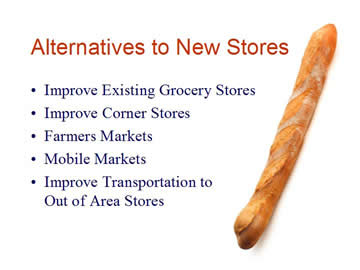


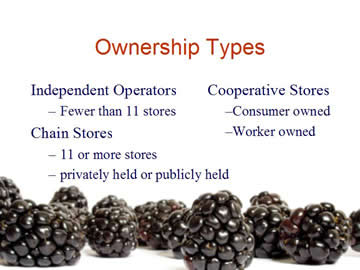
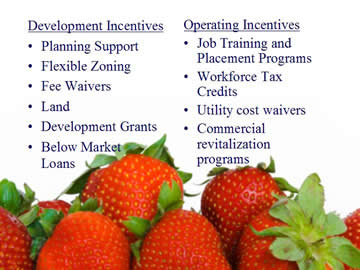
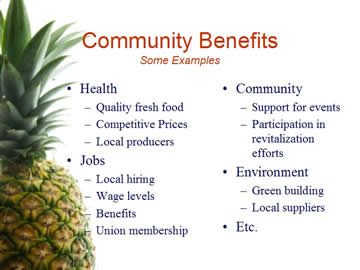
Posted by Rick Jacobus at 05:23 PM | Comments (0)
September 15, 2007
Inclusionary Housing Production Study
![]() Written By Rick Jacobus and Maureen Hickey.
Written By Rick Jacobus and Maureen Hickey.
Affordable By Choice:Trends in California Inclusionary Housing Programs was commissioned by the Nonprofit Housing Association of Northern California, The California Coalition for Rural Housing, The San Diego Housing Federation and the Sacramento Housing Alliance. The report details the findings of a statewide survey of local government agencies that have adopted inclusionary housing policies. Key findings include:
* Nearly one-third of California jurisdictions have inclusionary programs
* More then 80,000 Californians have housing through inclusionary programs
* Most inclusionary housing in integrated within market rate developments
* Inclusionary housing provides shelter for those most in need
* Lower-income households are best served through partnerships
Click here to download an exceprt of the report.
Download the full report
Posted by Rick Jacobus at 02:52 PM | Comments (0)
September 14, 2007
Understanding Subsidy Retention
I created this interactive tutorial on the economics of permanently affordable housing after trying to explain these concepts to small groups with static PowerPoint slides. The key to understanding the growing homeownership affordability challenge is the relative rates of change of housing prices and incomes. I found that this idea was difficult to explain verbally but was easy for people to understand with the help of simple drawings. To create the tutorial, I had to not only create the images and write the accompanying text but build a complex user interface to allow people to control the flow of the presentation and skip forward and backwards.
The presentation has proven extremely popular and has been shown by myself and a number of other advocates to thousands of people at a series of housing and urban development conferences. The latest version includes an imbedded voice narration. The presentation can also be run without the audio with either full text narration on screen or with bulleted text for live presentations to groups.
View Full Screen
View with Voice Narration
This animation is included on Burlington Associates Starting a CLT Multimedia Kit. The CD version can be run from a laptop without an internet connection.

Posted by Rick Jacobus at 04:53 PM | Comments (0)
September 08, 2007
Commercial Revitalization Planning Guide
Written by: Rick Jacobus and Maureen Hickey
This hands on guidebook is filled with detailed direction that will provide practitioners with a starting point for organizing comprehensive commercial district revitalization efforts. It takes the reader through each stage of revitalization from planning, research, and visioning to understanding the potential of the community, analyzing the business mix, marketing the assets, and implementing the work plan. The planning guide also provides a set of practical tools to assist in implementation.
Table of Contents:
Forward
Urban Commercial Revitalization Programs
Planning For Revitalization
Identifying and Involving Stakeholders
Developing a Community-Based Vision
Compiling Building and Business Inventories
Understanding Market Data
Using Surveys and Interviews to Collect Local Market Data
Assessing Crime and Community Safety
Developing Business Attraction Goals
Evaluate Streetscape Conditions
Branding the District Identity
Defining an Implementation Strategy
Measuring Impact
Appendix A: Hiring a Market Analysis Consultant
Appendix B: Resources
References
Acknowledgements
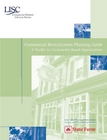
Download a PDF of the book
Order a hard copy of this book - $24.95
Order the Companion CD-Rom - 9.95
Posted by Rick Jacobus at 10:03 PM | Comments (0)
Joint Ventures with For-Profit Developers. A Guide for Community Development Corporations
![]()
Written by Greg Maher, Rick Jacobus, Maegan Winning and Judy Turnock.
This guide is designed to assist CDCs in becoming educated consumers as they think about, plan and become partners in joint ventures with for-profit developers.
Joint ventures between a community development corporation ("CDC") and a for-profit partner present tremendous opportunities for a CDC to build its skills and complete projects that are larger in scale and/or beyond its core competencies. However, there are a host of business issues raised by the prospect of a CDC co-owning or working closely with a for-profit on a project. Many issues need to be carefully negotiated for the CDC to protect its financial integrity and credibility. Based on Greg Maher's 2005 memo, this guide is structured to assist CDCs in becoming educated consumers as they think about, plan and become partners in joint ventures with for-profit developers.
Posted by Rick Jacobus at 09:37 PM | Comments (0)
September 05, 2007
CA League of Cities Conference
The Hidden Pros and Cons of Affordable Homeownership Programs
September 6th, 2007
Panelists:
Kara Douglas, Affordable Housing Programs Manager, Contra Costa County
Rick Jacobus, Community Economic Development Consultant, Burlington Associates
Juliet E. Cox, Attorney, Goldfarb & Lipman LLP
Handouts
Presentation Outline
Contra Costa Occupancy Letter
Contra Costa Owner Declaration
Additional Resources:
Preservation of Affordable Homeownership: A Continuum of Strategies by Rick Jacobus for the Center for Housing Policy
Ensuring Continued Affordability in Homeownership Programs by Polly Marshall and Barbara Kautz Goldfarb & Lipman LLP for the Institute for Local Government
Posted by Rick Jacobus at 12:26 PM | Comments (0)

